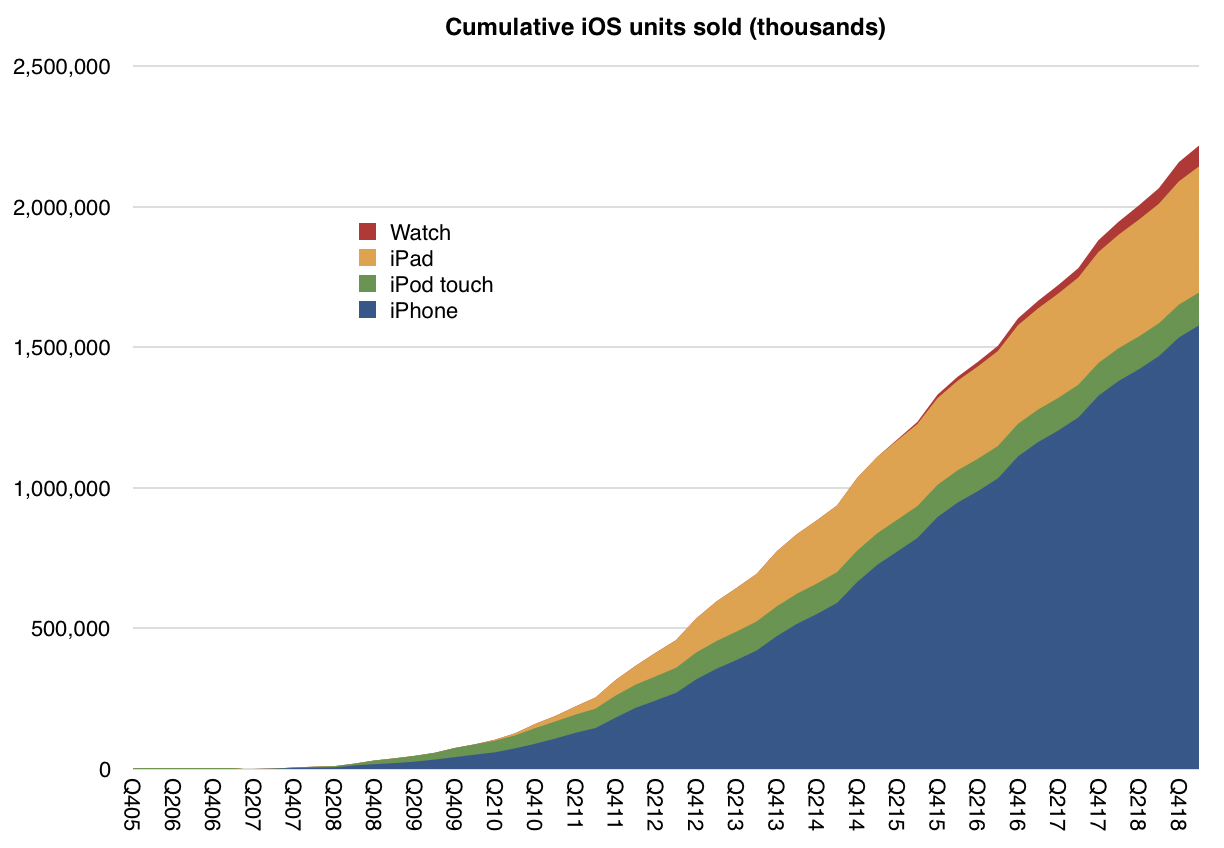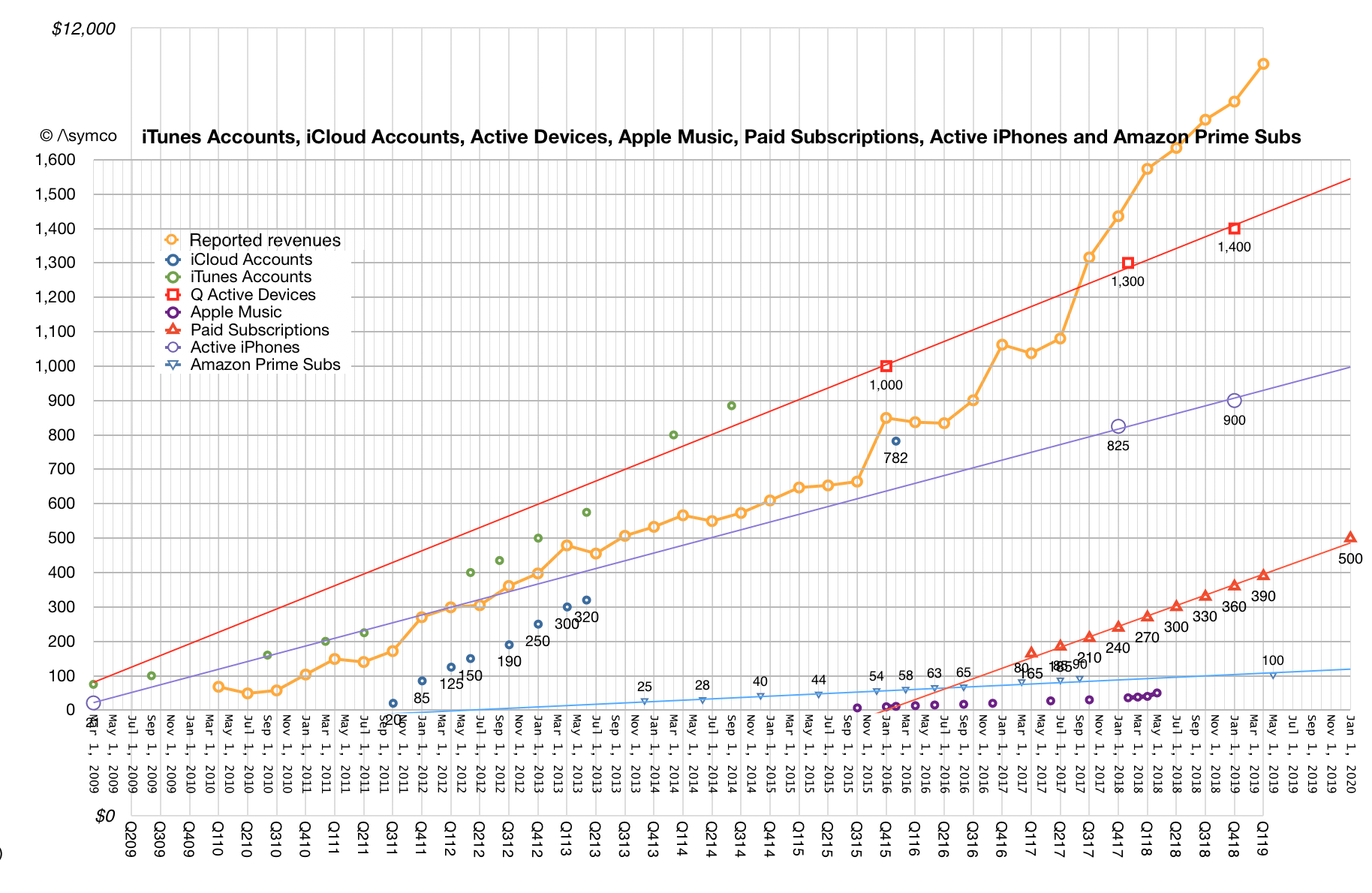The analyst Horace Dediu (which has already published excellent articles on Apple’s business) investigated the popularity of the iPhone (gadget Apple’s flagship) over the years and how it has affected the company’s business. He also verified the (vertiginous) growth of the Apple services and the revenue of this category.

Dediu opened the discussion by stating that the iPhone “is the most successful product of all time”; not for less, after all the smartphone has sold more than 1.6 billion of units worldwide. This number is even more surprising when we include all iOS devices already sold: 2.2 billion devices.
To have an idea, in 2016, the installed base of users of iPhones, iPads, Macs, iPods touch, Apple TVs and Apple Watches was 1 billion people; that is, currently, this number only includes the use of iPhones worldwide. According to Dediu, this means that sales of gadget reached US $ 1 trillion last year – or better, they exceeded, reaching $ 1.9 trillion.
Although the performance of the iPhone has taken Apple to a new level in the world of technology (which, in reality, started with the iPod), keeping it as the only pillar of support would be a risk for the company. In this sense, the analyst explained that it is important to maintain a certain dynamism in business – in the case of Apple, this came with the possibilities created by the iPhone.

With the launch of App Store, in July 2008, the company created an innovation platform in the software area, which remains one of its main sources of revenue. In addition, the integration of the Apple ecosystem (mainly from iCloud) has helped sales of other products, such as Macs and iPads.
Naturally, Apple has taken several initiatives over the years to increase sales not only of the iPhone, but of its other products. Perhaps the company’s smartest idea (both to unite its product spectrum and to attract new consumers) was adding services to its catalog.

In 2006, a year before the launch of the iPhone, the iTunes Store earned $ 3.3 billion from offering content for Macs and iPods. Ten years later, the company’s online store revenue rose to $ 80.5 billion. For this year, store sales are expected to reach US $ 100 billion, proving that this business still has a lot of gas (and profit) to offer.
So much so that this year, the Cupertino giant announced the launch of three new services: Apple News + (for news), Apple Arcade (for games) and Apple TV + (for streaming videos), not to mention the Apple Card. As you can imagine, the news will be responsible for a big step in the company’s revenue growth in the coming quarters.
Dediu closed his analysis by saying that there is a disconnect between what people think Apple sells and what it really builds. For the analyst, while companies sell objects or services, Apple sells solutions to “problems that are seen, classified and measured as objects”; to him, this can easily mislead the consumer, as it may seem the same thing.
